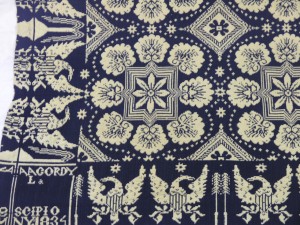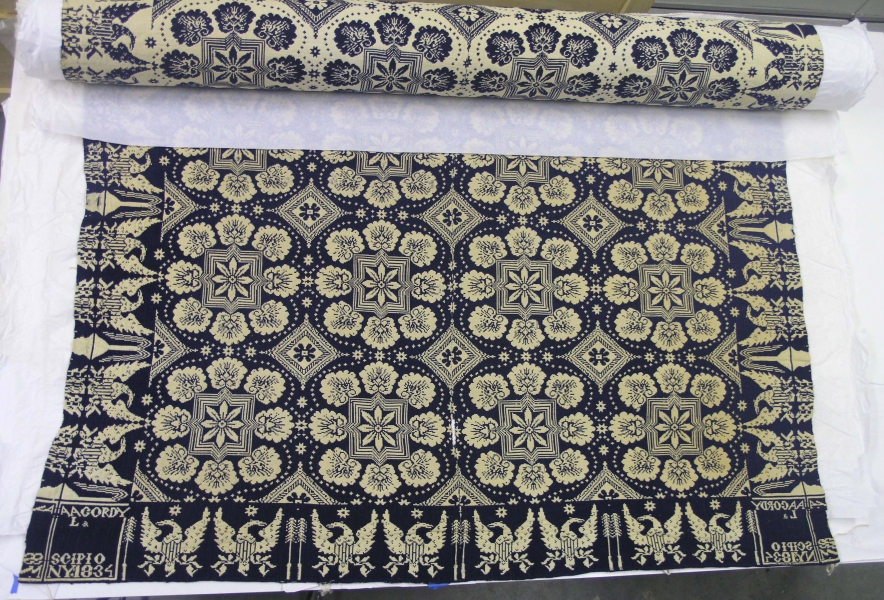The Davis Museum is closed for Wellesley College’s winter break. Please join us at our spring opening celebration on February 5, 2026, at 4 pm.
Coverlet


The production of this 1834 Jacquard coverlet, woven by A. A. Gordy in Scipio, New York, united mechanized manufacture with handcraft. This seemingly improbable combination was actually quite typical of this era: in 1830s America, a nascent consumer culture fueled by factory-made goods coexisted with traditional ways of life.
Gordy employed the Jacquard loom, a new technology that simplified the weaving of complex patterns, to create this coverlet. Invented in France in 1801, the Jacquard loom came to America in the mid-1820s, and was revolutionary for its use of metal punch cards to mechanize weaving patterns; the first computer punch cards were actually based on those used in Jacquard looms. With the Jacquard punch cards to program the pattern, the weaver only needed to throw the shuttle back and forth, as though weaving plain cloth, to produce magnificent designs. This newfound ease of figure-weaving encouraged many Jacquard weavers to include their name and the date in the woven pattern; Gordy tells us when and where he wove this coverlet in its lower left corner.
In spite of its use of cutting-edge Jacquard technology, however, the production of this coverlet also depended on traditional hand-dyeing processes: the wool for this coverlet was likely dyed by a professional local dyer outdoors over an open fire, its deep navy blue produced by natural dyestuffs such as logwood or indigo. Jacquard coverlets were expensive, coveted products of local industry; this coverlet, with its intricate rosettes and majestic eagles, would have been quite fashionable for its fine detail. In addition to this aesthetic appeal, the new technology used to weave this coverlet would have contributed to the coverlet’s allure, making it an object of pride in an 1830s household.
Claire McRee ’12
Curatorial Intern, Summer 2012